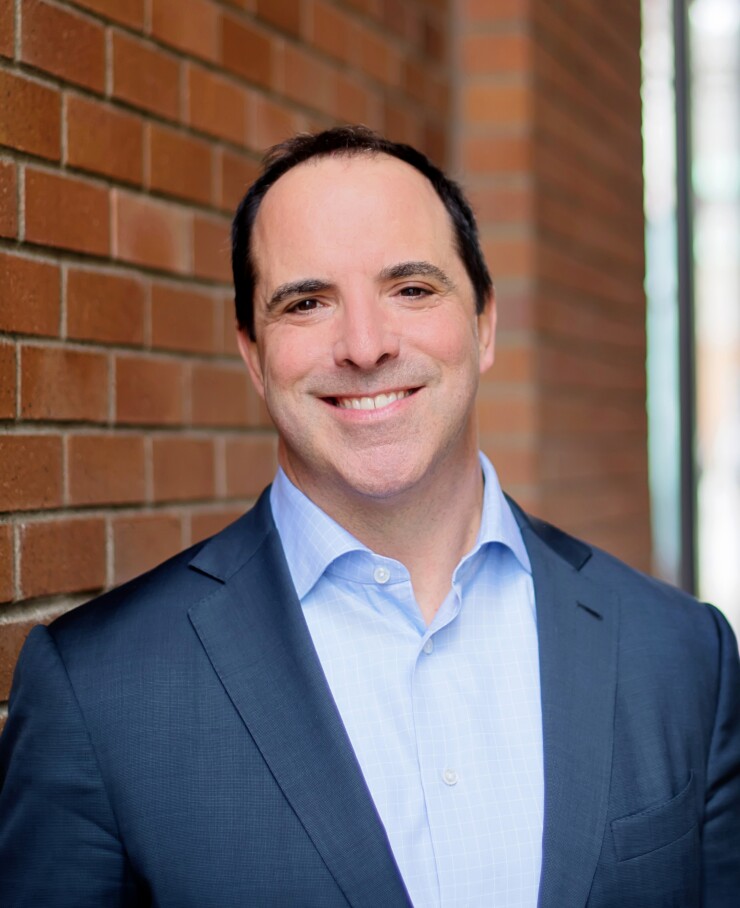Helping employees prepare for retirement remains a top concern for leading CHROs and other senior HR professionals, but student loan benefits is “the big one” that most are trying to get right, says Ayco CEO Larry Restieri.
Employers such as PwC, Prudential and other companies have been adding the popular benefit to meet demand as outstanding student loans has ballooned to $1.5 trillion. PwC said in June that it has paid nearly

Ayco, a Goldman Sachs company, has been convening its InnerCircle gathering of top CHROs and other executives for the past three decades, and those corporate leaders, who manage HR and benefits budgets across the country, met for the first time in New York this week. Its CEO sat with Employee Benefit News on Wednesday to go over highlights from the conference, which covered topics such as compensation, benefits, talent and culture.
What are the top trends that CHROs have on their radar?
Student loans are the big one. One of the things [HR experts] are finding is that with the student loans issue, it’s not just a recent graduate issue but it’s one that affects baby boomers greatly. Presumably that’s not because they incurred the debt themselves. It’s because of their kids, and they’re taking on the debt. How we as employers manage the student loan issue is really important.
This is where Ayco and companies like Ayco can come in and help employers navigate that need.
What impact are you seeing from the influx of younger workers coming into the workforce, and how are employers adjusting?
When you talk about the younger guard, you have to talk about creative ways to get to people and manage change. We talk a lot about financial literacy and data and user experience.
We have a younger population that may be more digitally savvy, and we need to make sure we’re engaging with them on the benefits side.
We need to pay more attention to making sure people understand how everything is used. Sometimes there are so many benefits out there, and people don’t understand or know if they should be maxing out their 401(k) or if that money is better spent on paying down student loans. Or should you have an HSA? Not all employees always have a good grasp of that.
You speak about user experience. Can you give some examples of why UX and communications is so important to get right?
If you have great benefits and poor delivery, you won’t get good scores from your employees. But if you actually have mediocre benefits, and great delivery and communication, your employees are likely to be happier because they understand them and use them. That’s not as simple a thing to figure out how to do as it sounds.
You see the relationship between employers and employers as evolving, or perhaps returning back to a traditional role where the company serves a paternal or maternal role in terms of its responsibilities to its employees. Please explain.
The other big thing that I thought was really interesting is that there’s a sense that corporations have become this almost kind of compass, where employees are looking to their employer for answers that they weren’t necessary doing so in the past. Employers can be the guiding light on social issues, or loan management, or managing retirement, to the point where they are filling the gap in people’s lives that weren’t traditionally filled. People are looking to the employer to help them answer questions about their financial lives.
In the void, they are looking toward their employer. They are looking for that contract with the employer. They’re looking at their employer as a trusted source for guidance in terms of a lot parts of their life.
If you feel your company is doing good in the world, then you feel better about your company. You feel better about what you do, and you trust your employer more, and then you look for them for benefits and all sorts of help in your life. You have happier employees, they stay longer and they don’t look to leave. There’s actually real metrics you can show a CHRO that if you do all these things for the health and well-being of the employee, it actually adds to the bottom line. It’s actually the CFO who should see the benefits of what the CHRO is doing.





